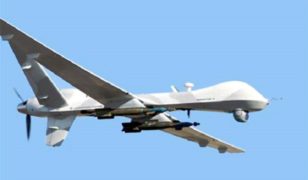ORS-1 intelligence satellite begins fourth year in orbit

The ORS-1 satellite is the first and only dedicated space-based intelligence, surveillance and reconnaissance (ISR) capability for the U.S. Central Command (USCENTCOM), successfully demonstrating tactical ISR from space.
Designed to meet a one-year mission life requirement, UTC Aerospace Systems announced that the satellite has entered its fourth year on orbit. UTC Aerospace Systems is a unit of United Technologies Corp.
Developed to fulfill requirements from the Commander of U.S. Strategic Command to support USCENTCOM’s need for enhanced battlefield awareness, the satellite went from the drawing board to delivery in only 30 months. Launched from the Wallops Island Flight Facility aboard a Minotaur I launch vehicle on June 29, 2011, ORS-1 has been satisfying the mission needs of USCENTCOM and others ever since.
Recent House Armed Services Committee language states, “The committee believes that the Operationally Responsive Space-1 (ORS-1) satellite has provided significant intelligence value to the U.S. Central Command and the Army’s 513th Military Intelligence Brigade.”
When referring to this capability, the 513th Brigade said, “The ability to provide timely geospatial-intelligence response to a real-world mission during execution cannot be matched.” U.S. Central Command provided similar feedback on the operational flexibility provided by this space reconnaissance asset to support urgent, short-notice requirements.
The ORS-1 payload uses technologies from the UTC Aerospace Systems’ advanced multispectral sensors for airborne and space applications. The company also developed and provided the ORS-1 ground segment that formats the satellite’s data products to be compatible for processing, exploitation and dissemination.
ORS-1 has earned numerous awards from the scientific community. It was named one of the top 25 most important concepts by C4ISR Journal, and earned the 2012 Mission Sustainment Integrated Product Team award from the Association of Old Crows for providing urgent-need imaging to USCENTCOM at 20 percent of the cost of traditional satellite systems.







